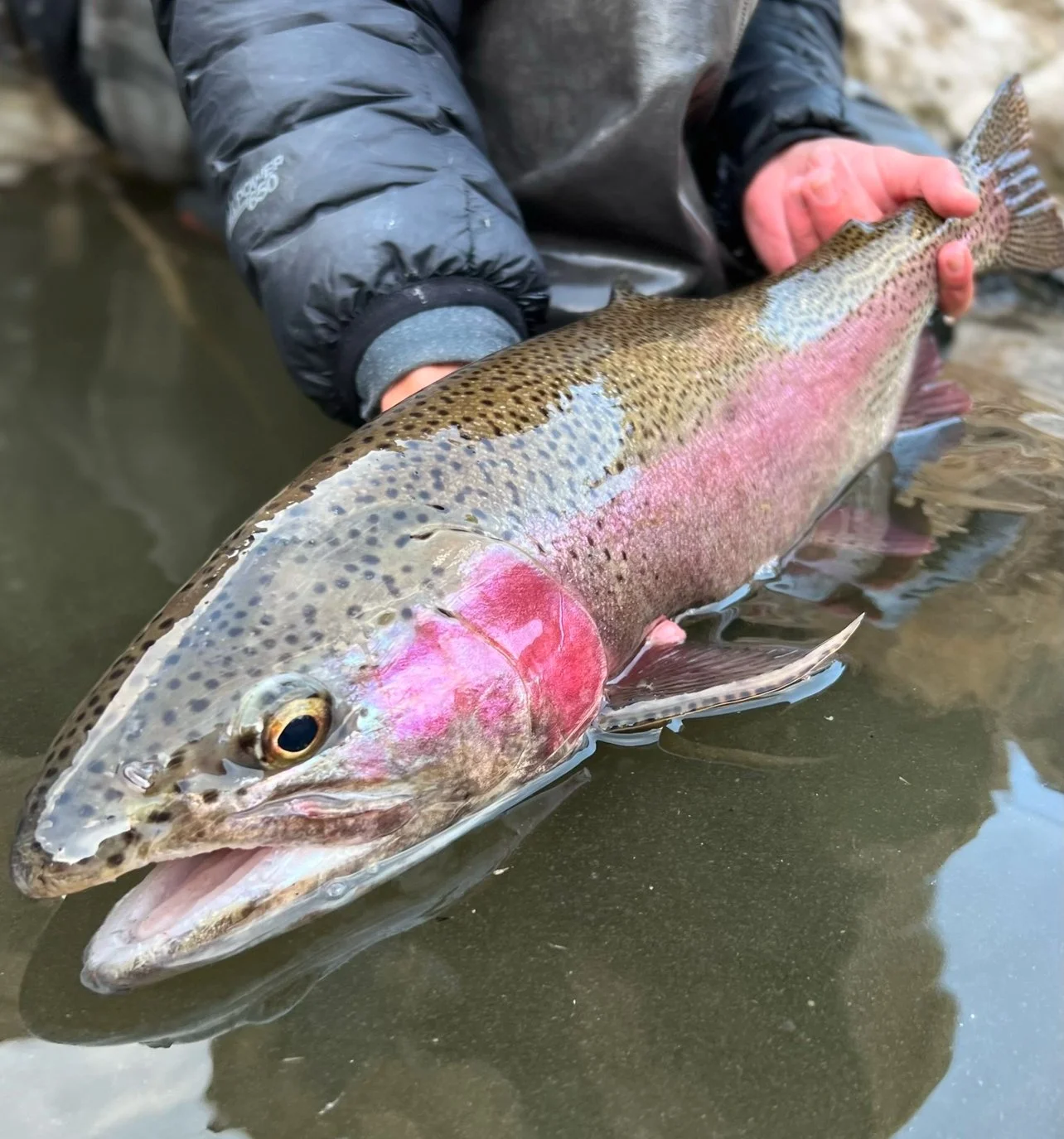Mastering Trout Feeding Patterns: Understanding Stoneflies & Midges
Written By Trent Jones
When it comes to fly fishing, understanding the behavior of insects and how trout respond to their hatches can significantly increase your chances of landing fish. One of the most interesting groups of insects to pay attention to are stoneflies, midges, and their various stages of life. Each of these insects has its own unique life cycle and behavior that affects when and how trout will feed.
The Stonefly Life Cycle and Trout Feeding
Stoneflies have a distinct life cycle that sets them apart from mayflies and caddisflies. While they do have a larval stage underwater, their emergence process is different. Unlike other insects, stoneflies don’t hatch on the water’s surface. Instead, they crawl onto streamside rocks and vegetation to hatch into adults on land. Because of this, adult stoneflies are not always available for trout to eat. However, stonefly adults are clumsy flyers and often get blown into the water by the wind or fall in after laying eggs. This makes them an occasional yet valuable food source for trout.
The Small but Mighty Midge
Midges are tiny insects, and at first glance, they might seem insignificant. But don’t let their size fool you—midges can be a crucial source of food for trout, especially in tailwater rivers below dams where they can even be the primary food source. Midges start life as worm-like larvae, which trout consume in large quantities. They also go through a pupa stage that is easy for trout to spot and catch near the water’s surface.
Like caddisflies, midges will quickly fly away once they sprout wings. But trout still take advantage of them, especially when it's cold or windy, and the midges struggle to take flight. Furthermore, midges will return to the water to mate, lay eggs, and die. They often form large clusters, where two or more midges hook together. These clusters can make it easier to fish larger flies when imitating midges.
Trout Feeding During Insect Hatches
When trout are feeding on insects during a hatch, they don’t always act predictably. Sometimes they won’t respond at all, especially if the water is too cold or the hatch isn't dense enough. But when they do respond, their feeding behavior follows a clear pattern. Initially, they’ll target nymphs near the bottom of the river, where the insects begin their migration to the surface. At this stage, fishing with an imitation nymph can be effective.
As the insects rise in the current, trout will intercept them higher up in the water column. Eventually, when the insects near the surface, trout will concentrate on feeding at all levels or focus on insects that are trapped on the surface. This phase, when the trout are most actively feeding, offers some of the best fishing as they become less cautious in their eagerness to eat.
The Struggle at the Surface
When insects first reach the surface, they face two challenges. The first is the meniscus, which acts as a physical barrier. The second is the emergence from their larval skin into a winged adult, which can take anywhere from a few seconds to a few minutes. Trout are keenly aware that these struggling insects are easy prey and often target them in this vulnerable state, known as an emerger.
Once the insects fully emerge as adults, they may stay on the surface for a while, particularly in cold or rainy conditions. On dry, sunny days, they may take off almost immediately. The longer an insect remains on the water’s surface, the more likely trout are to feed on it.
The Final Stage: Spent Insects
After mating and laying eggs, adult insects often return to the water, and many will die in the process. This creates a prime feeding opportunity for trout, who eagerly wait for the dead and dying insects to drift down the river. If you're fishing during this stage, you’ll want to focus on imitating the spent insects to maximize your chances of landing a fish.
How to Identify Which Insect Trout Prefer
When multiple insect species hatch at once, it can be challenging to figure out which one the trout prefer. Observing their rise forms can offer clues. A splashy rise likely indicates the trout is feeding on an emerger or a large, fluttering insect. If the rise is smooth with no bubbles, the trout is likely eating an emerger just under the surface. Bubbles in the rise form suggest the fish are feeding on insects at the surface, as they ingest air while feeding, which is expelled through their gills.
A subtle, ring-shaped rise is a sign that the trout is taking small insects on the surface, such as mayfly spinners or spent caddisflies.
Conclusion
Understanding insect hatches and how trout feed during different stages is key to improving your fly fishing technique. Pay close attention to the different life stages of stoneflies, midges, and other insects. By adapting your fly choice and fishing strategy to match what the trout are feeding on, you’ll increase your chances of a successful outing. Tight lines out there!







